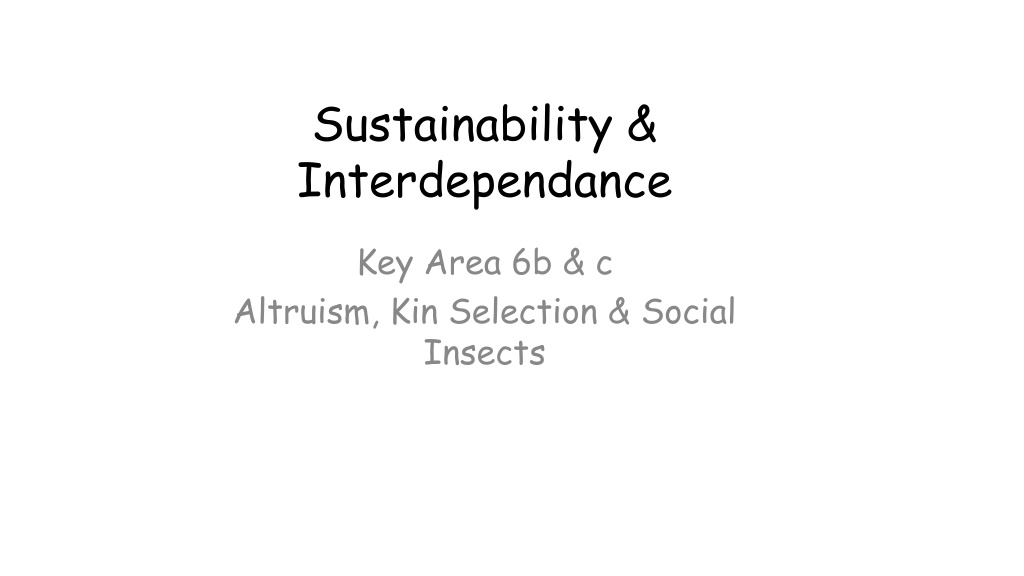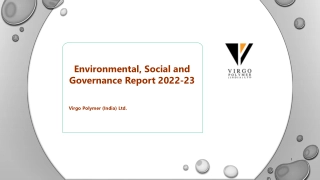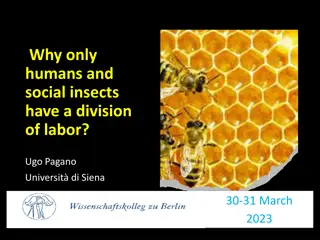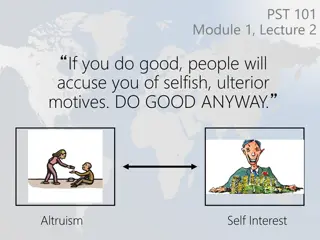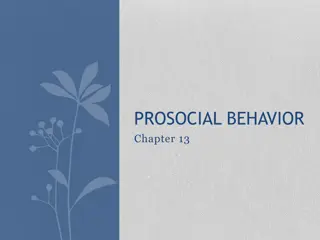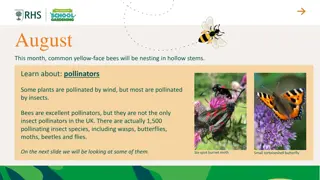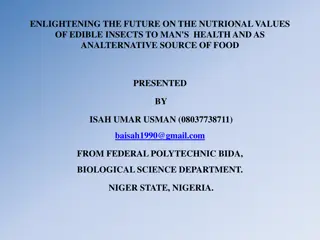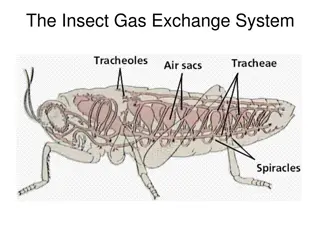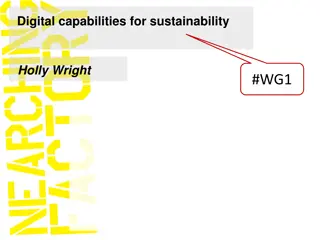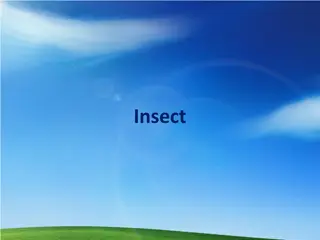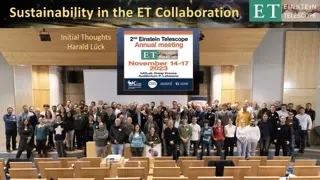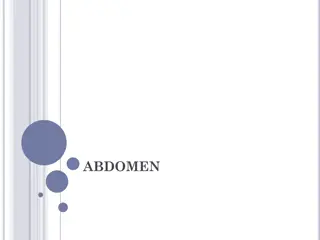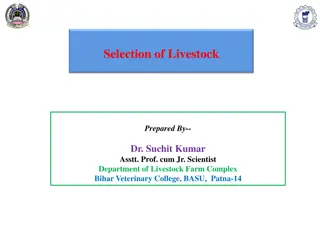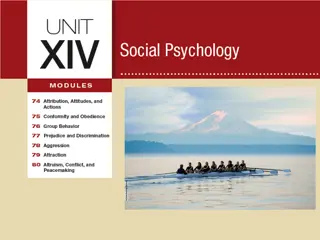Understanding Altruism, Kin Selection, and Social Insects in Sustainability
Altruism, kin selection, and social insects play crucial roles in sustainability. Altruistic behavior, like reciprocal altruism and kin selection, benefits recipients while potentially harming donors. Social insects, such as bees and ants, exemplify cooperation and societal structures that aid in ecosystem services like pollination and pest control. Explore how these concepts intertwine to support interconnectedness and sustainability.
Download Presentation

Please find below an Image/Link to download the presentation.
The content on the website is provided AS IS for your information and personal use only. It may not be sold, licensed, or shared on other websites without obtaining consent from the author. Download presentation by click this link. If you encounter any issues during the download, it is possible that the publisher has removed the file from their server.
E N D
Presentation Transcript
Sustainability & Interdependance Key Area 6b & c Altruism, Kin Selection & Social Insects
Learning Intentions By the end of this topic you should be able to: Describe how altruistic behaviour can harm the donor individual but benefit the recipient. Describe how altruistic behaviour can be common between a donor and a recipient if they are related (kin). State that in kin selection, the donor benefits in terms of the increased chances of survival of shared genes in the recipient s offspring or future offspring. Define what is meant by social insects. Outline the structure of their society and their ecological importance evolution of the societies of insects such as bees, wasps, ants and termites, in which some individuals contribute reproductively. State that most members of the colony are workers who cooperate with close relatives to raise relatives. Describe how some species of social insects show ecological importance to humans in providing ecosystem services such as pollination and pest control.
Altruism Altruistic behaviour is unselfish behaviour which is harmful to the donor and beneficial to the recipient. e.g. one meerkat standing guard while others eat There are two possible explanations for altruistic behaviour: 1) Reciprocal altruism 2) Kin selection
Reciprocal altruism This involves one animal giving help to another animal in the prospect of the favour being returned. e.g. grooming to remove parasites in apes. There is an assumption that the favour is returned at a later date and it requires intelligence in animals to remember who is indebted & how to recognise cheats.
Reciprocal Altruism - Bats Bats can only go without food for 2 nights but successful vampire bats regurgitate blood to help out unsuccessful hungry bats. Hungry bats then lick the faces of successful bats Successful bats will only do this for bats that have helped them out in the past
Altruism Kin Selection
Kin Selection Behaviour that appears to be altruistic between a donor and a recipient if they are related (kin) For example, when a parent/sibling/child sacrifices itself for the survival of a closely related recipient (child, sibling, parent) in the knowledge that their genes will be passed on
Advantage of Kin Selection? The donor benefits indirectly as their shared genes live on by allowing the recipent (offspring) to reproduce In a way, this ensures the donor s immortality.
Coefficients of relatedness Relationship Parent offspring Siblings Half-siblings Uncle/aunt niece/nephew Grandparent grandchild Cousins Coefficient (r) 0.5 0.5 0.25 0.25 Coefficients of relatedness table shows the proportion of genes that are identical in related individuals. 0.25 0.125
Coefficients of relatedness A sister gives up her life for three of her siblings (r = 0.5): benefit = 0.5 3 = 1.5 cost = 1.0 (benefit cost) = 1.5 1.0 = 0.5 Thus the sacrifice is a benefit that outweighs costs and the gene for altruism could evolve in a population.
Social Insects Complex patterns of social behaviour have involved in societies of insects such as A)Bees (& wasps) B) Ants C) Termites
Social insects - division of labour Close co-operation occurs between the individuals caring for the young. 1. by many sterile members Food gathering and defence 2. Reproduction is the responsibility of a few fertile members
Honey Bees Three castes exists 1. Queen 2. Workers 3. Drones (1 female per colony) (many thousand females) (males few hundred) The queen produces eggs that are fertilised by drones. The fertilized eggs become workers
Worker Bees (Kin Selection) All sister worker bees share the same mother (queen) and so have many genes in common. Worker bees maintain & defend the hive rather than reproducing themselves to ensure increased survival of shared genes (kin selection) Their duties include: Storing pollen Guarding hive from enemies Foraging for food
Signalling in Bees When bees forage for nectar they return to the hive to perform a waggle dance This communicates to the colony: Distance, direction and richness of food This then minimises energy expenditure of other members of the hive in locating the food
The direction of the straight run determines the direction of the food source The rate of looping indicates the distance to the food supply. The duration of the buzzing indicates the quality of the food source
Ants Ants search for food in a meandering pattern Once the food is located the ant returns to the colony leaving scent markers behind it Other ants follow the trail, reinforcing the scent marks until the supply is finished (old trails fade away when not reinforced)
Termites Termites have a major contribution to fertility of soil in semi- desert and savannah areas due to their role in decomposition. They decompose dead wood and plant debris and this releases nutrients back into the cycle
